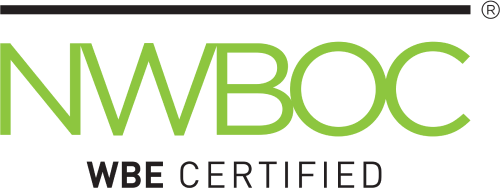Case study: Emergency management
Driving consistency in national emergency management operations

Table of contents
Establishing national emergency standards for emergency preparedness
The National Incident Management System (NIMS) guides how levels of government work together to prepare for, respond to, and recover from incidents and hazards. With common standards from NIMS in command and control, communications, and resource management, agencies across local, state, tribal, and territorial levels can coordinate resources, facilities, equipment, and personnel more effectively.
An influential emergency management agency began an initiative to enhance NIMS, and turned to Eagle Hill to help define and write new standards and tools. We developed more than 400 resource typing and position qualification documents, engaging numerous stakeholders for critical input. The result? Nationally-recognized, high-quality guidance that improves resource sharing and mutual aid agreements.
What is resource typing?
This is the process of defining, categorizing, and setting minimum capabilities for emergency management resources so that emergency managers can request and receive exactly what they need.
What are position qualification documents?
Position qualification documents define competencies and tasks that a person must demonstrate to be certified for a specific emergency management role.

Goal
Create consistent NIMS standards to improve cross-agency and cross-jurisdictional collaboration, scaling high-quality emergency preparation, response, and recovery efforts across the country.
Unconventional consulting—and breakthrough results

jurisdictions with access to updated NIMS

emergency responders trained

resource typing documents developed
The challenge: Standardizing tools for effective crisis response
While emergency planners and managers worked to coordinate resources and personnel, the emergency management agency lacked a structured prioritization process for enhancing NIMS documentation. The agency knew it needed to standardize this critical doctrine and tools, but it was hard to bring stakeholders together because key staff were often deployed to crisis response operations. They turned to Eagle Hill to provide program management support to develop and implement consistent NIMS standards nationwide.
The roadmap to success: Supporting nationwide emergency management
Eagle Hill’s emergency management experts took a data-driven, collaborative approach to help the agency develop this critical national doctrine. As part of this initiative, we:
Introduced a data-informed development framework for emergency preparedness. Our team used emergency preparedness and resource deployment data (e.g., THIRA, SPR, Emergency Management Assistance Compact) to guide document development priorities.
Delivered at scale with quality assurance. We managed development and delivery of more than 400 critical documents using rigorous quality assurance and quality control processes as well as a 508-compliance process.
Equipped stakeholders nationwide with tools for improved emergency management. We delivered webinars, created training materials, and facilitated in-person workshops to expand awareness and use of the national emergency management position qualifications and resource typing tools.
Recognizing the unpredictable nature of the emergency management environment, we emphasized adaptability and hands-on collaboration, especially during national emergencies. In this spirit, we:
Supported program continuity during crisis response. The team sustained progress while 80% of agency staff was deployed during major disasters, including events impacting critical infrastructure.
Streamlined the expert sourcing process. We standardized the process of convening, onboarding, and running working groups of subject matter experts to make the process of updating NIMS documentation more efficient and consistent across different focus areas, including applications within local government agencies.
Built integration across agencies to strengthen mutual aid agreements. We brought together key stakeholder organizations including the American Red Cross, National Wildfire Coordinating Group, United States Coast Guard, United States Department of Agriculture, and others to solicit their expertise, share relevant information, and prevent communication gaps that could delay progress in mutual emergency planning efforts.
Helped launch a national coordination body for consistent standards. To gather relevant expert insight in a timely way, we launched the first-ever NIMS coordination group. The group brings representatives from various jurisdictions together to give feedback on the tools and training needed to improve NIMS adoption and implementation, supporting both ongoing emergency response and long-term preparedness strategies.
Impact: Enabling scalable, data-driven emergency management
Today, the agency is delivering consistent, high-impact emergency management doctrine and tools and has a repeatable framework for document development and stakeholder coordination. In addition, it strengthened national emergency preparedness, improved interoperability among emergency responders, and elevated data-driven decision making. Our team received all “excellent” performance assessment ratings, and the agency extended our support into a follow-on contract.

